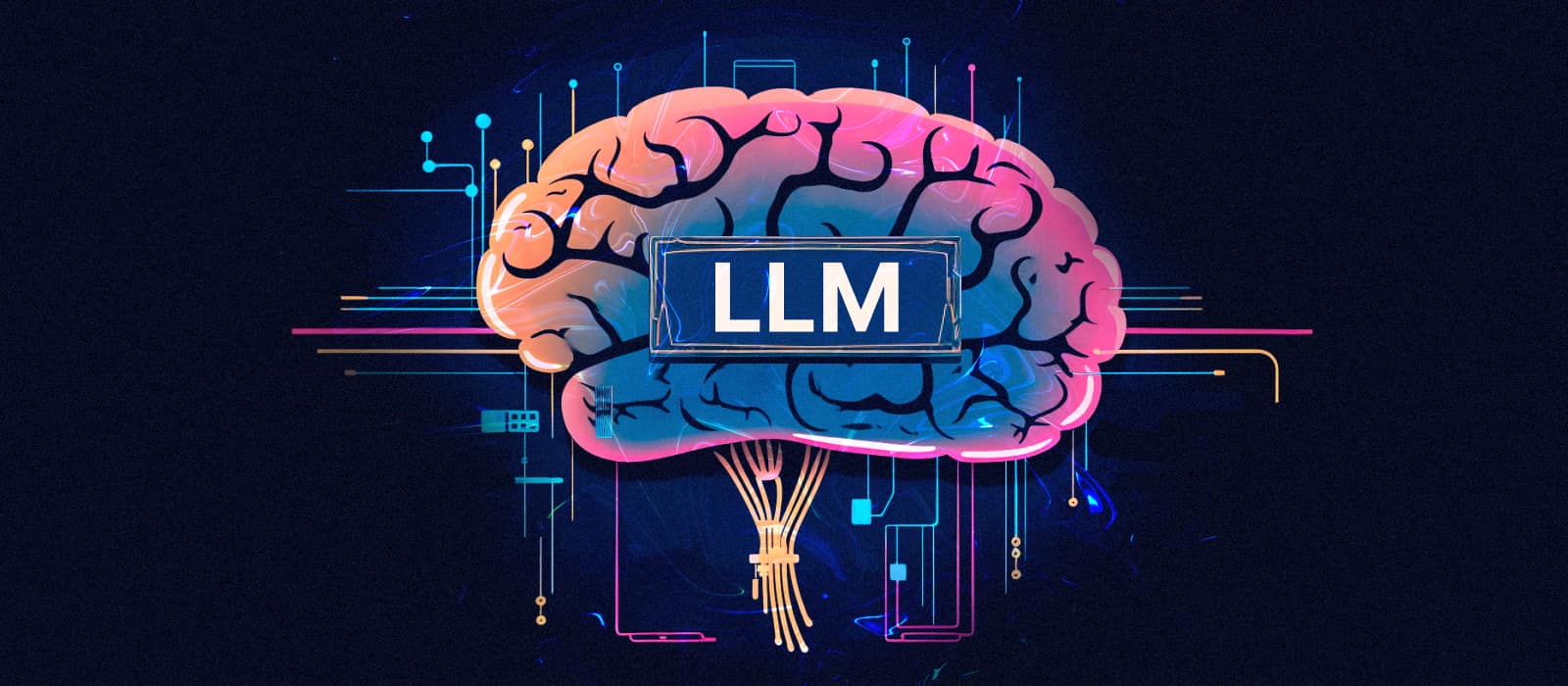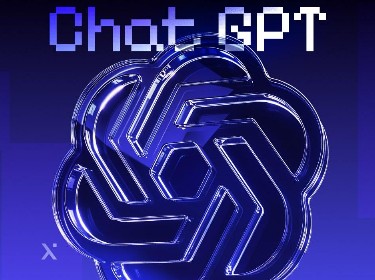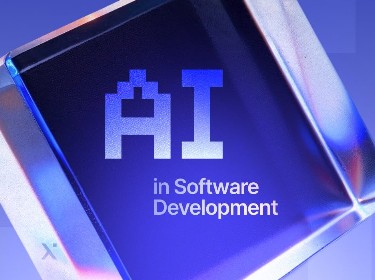Human or AI? Who can tell? Large language models can write stories, answer questions, and even make jokes, almost like a real person. But it's their mix of creativity and data that really makes us wonder, as we enter a new era where technology feels more and more human.
Large language models (LLMs) are advanced artificial intelligence systems designed to understand, interpret, and generate human-like text. They are a type of deep learning model, to be exact, that have been trained on a wide variety of internet texts. LLM applications can perform numerous tasks including writing essays, creating poetry, coding, and even engaging in general conversation.
Probably the most famous example of a large language model to date is OpenAI’s GPT-4, which powers ChatGPT. It has demonstrated a remarkable understanding of complex topics and the ability to generate detailed, nuanced text in various styles and languages. This showcased the potential of large language models to transform industries, while accelerating AI app development for real-world business use cases.
As the technology continues to improve every single day, LLM use cases are also becoming more sophisticated and diverse. Our research and development team collected the most trending applications of large language models. Let’s see how they are utilized in real life.
Would you like to know more about statistics and trends in AI? Check them out here
10 most popular applications of large language models
![]()
Large language models’ ability to generate text in real-time has made them invaluable in enhancing search engines, powering virtual assistants, and improving language translation services. Beyond these examples, LLMs are also transforming custom software development by enabling more intelligent and adaptive applications. While these are just three examples, there are many more LLM use cases.
Here we outline key use cases and explain how LLM services make large-scale AI deployment practical and secure.
1. Content generation
LLM applications are especially good at content generation. They can be used to automatically create texts for various purposes, including articles, blog posts, marketing copy, video scripts, and social media updates. Moreover, LLM-backed generative AI apps can adapt to different writing styles and tones, making them versatile for generating content that resonates with specific target audiences.
Businesses and content creators harness these models to streamline content production, saving time and effort in the writing process.
Real-world apps
Among the myriad applications of large language models, content generation stands out as one of the most popular and widely adopted use cases. This is why there are already numerous AI-powered apps that serve this particular purpose. Claude and ChatGPT are two of them.
Claude
Claude is an AI assistant developed by Anthropic. It has rapidly evolved since its first release in March 2023.
Claude is great at sophisticated dialogues, creative content generation, complex reasoning, and detailed instruction. Its unique feature is the industry-leading 100,000 token context window, which allows it to process an extensive amount of information equivalent to the length of an average novel in just a minute.
ChatGPT
When it comes to content generation, it’s impossible not to bring up this well-known AI tool. Its main purpose is to assist users in generating coherent text based on the prompts it receives. For businesses seeking to embed this capability directly into their workflows and customer-facing applications, professional AI and GPT integration services are the key to unlocking seamless, automated content creation.
Digital marketers, for example, turn to ChatGPT to craft compelling ad copy, blog posts, and social media content that captivates their specific target audience. Similarly, educators find ChatGPT helpful in creating instructional materials, quizzes, and interactive learning modules, making the educational content both informative and engaging for students.
In the creative industry, authors and script writers use ChatGPT to break through writer’s block, develop plot ideas, or even write entire sections of their manuscripts. Programmers and developers also utilize ChatGPT in SaaS development to generate code snippets, debug existing code, or learn new programming languages.
The possibilities are quite vast. As ChatGPT continues to evolve, its applications across different fields are only expected to grow.
Despite its numerous benefits and advancements, AI still exhibits biases. Discover the common types of biases that may occur and learn how to address them
2. Translation and localization
LLM applications can provide accurate, context-aware translations across numerous language pairs. These models are trained on vast collections of bilingual or multilingual text, allowing them to understand nuances, idioms, and grammatical structures of different languages. They can maintain the intent and style of the original text, which is crucial for literary translations, business communications, and legal documents.
As for localization, LLMs help adapt content culturally and contextually for different target audiences, ensuring that the translated material is culturally appropriate and resonant. They consider local customs, measurements, date formats, and cultural references, making the content relevant and accessible. This capability is particularly important in marketing and entertainment industries, where engagement heavily depends on cultural nuance.
In addition to this, large language models facilitate real-time translation and localization, enabling businesses to communicate effectively with international partners and customers.
Real-world apps
Let’s take a look at two large language model applications — Falcon LLM and NLLB-200.
Falcon LLM
Falcon LLM, developed by the Technology Innovation Institute (TII), is an open-source adaptive AI solution development model. Its Falcon 40B version was trained on 1 trillion tokens and has 40 billion parameters, while Falcon 180B boasts 180 billion parameters, having been trained on 3.5 trillion tokens.
In general, Falcon LLM excels across a spectrum of activities, including reasoning, programming, skill assessments, and knowledge evaluations.
What’s noteworthy is that its multilingual capabilities extend across numerous languages, including English, German, Spanish, French, Italian, Polish, Romanian, Swedish, and more, making it adept at translation and localization tasks. This allows for seamless integration into various applications, especially those requiring a deep understanding of multiple languages.
NLLB-200
NLLB-200 is an artificial intelligence model introduced by Meta AI. It translates across 200 different languages, incorporating many that were previously unsupported or poorly served by existing translation tools, and notably includes support for 55 African languages.
This model is not just a technical achievement but also a step towards a more inclusive technology, allowing for better communication and understanding across a diverse range of languages and cultures.
3. Search and recommendation
LLMs are capable of understanding and processing natural language queries with unprecedented accuracy and context. When integrated into search engines, these models can interpret the intent behind a user’s query and deliver more relevant and precise results. They can also generate summaries of content, making it easier for users to find the information they need quickly.
To fully leverage LLMs in mobile applications, it’s essential to invest in both iOS app development services and Android app development as this ensures that your applications are optimized for performance and user experience across different platforms.
Real-world apps
Let’s explore Bard — a compelling example of how LLM applications are enhancing search systems.
Bard
Developed by Google and launched in March 2023, Bard is a good example of an LLM application in search. Originating from the LaMDA family and subsequently upgraded to PaLM and Gemini, Bard was introduced as a response to the rise of OpenAI’s ChatGPT.
As a research LLM, Bard leverages Google’s extensive knowledge base and predictive capabilities to generate responses, offering creative and flexible answers to user prompts.
In essence, Bard improves Google Search by offering a “Google it” feature, which lets users confirm its responses or delve deeper. This opens up access to reliable sources and fosters a more integrated search experience.
Are you ready to develop your own AI strategy for your company? Find out how to effectively plan and implement it
4. Virtual assistants
![]()
At the core of AI-powered virtual assistants are LLMs that understand and process natural language. When a user asks a question or gives a command, the LLM interprets the intent and context of the request. Once the intent is understood, the LLM generates an appropriate response.
Modern virtual assistants also learn from interactions to provide personalized responses and improve over time. They analyze feedback, remember users’ preferences, and adapt to their unique way of communication.
Here is what LLM-based virtual assistants do specifically:
- Performing tasks: Virtual assistants can perform a variety of tasks, from setting alarms and reminders to booking appointments, sending messages, or even ordering groceries. They interact with other applications and services to execute these tasks on behalf of the user.
- Providing information: They can answer questions and provide information on a wide range of topics like weather forecasts, news, and traffic updates. LLMs enable them to pull and generate information from various sources quickly and reliably.
- Facilitating conversations: Virtual assistants can engage in conversations, providing a more human-like interaction.
- Automating customer support: Many businesses use virtual assistants to handle customer inquiries, guide users through troubleshooting, or provide detailed product information. This automation can lead to faster response times and 24/7 support availability.
- Enhancing accessibility: For individuals with disabilities or those needing hands-free support, virtual assistants offer a valuable tool for interacting with technology and accessing information effortlessly.
Real-world apps
Large language models are the driving force behind some of the most advanced and widely-used virtual assistants today, including Amazon’s Alexa and Google Assistant. Let’s see how they apply this technology to boost their services.
Alexa
Alexa is Amazon’s voice-controlled virtual assistant based on a cloud service. It is capable of voice interaction, music playback, setting alarms, streaming podcasts, and providing real-time information such as news or weather. Alexa can also control several smart devices, functioning as a home automation system.
In September 2023, Amazon announced a significant upgrade to Alexa, introducing a new, custom-built LLM to enhance the assistant’s capabilities and conversational qualities. The revamped Alexa aims to surpass ChatGPT by providing more “real-world” functionalities, including real-time information and personalized interactions, with a more realistic and casual voice.
Google Assistant
Google Assistant is an AI-powered virtual assistant predominantly available on mobile and smart home devices. It can engage in two-way conversations, utilizing Google’s deep learning neural network, known as Google Neural Machine Translation, as part of its AI.
Users can ask Google Assistant to carry out tasks like sending texts, playing music, or providing weather updates. It’s also integrated with various smart devices and can control smart home appliances.
Learn more about AI/ML-powered chatbot development and how it can help your particular business
5. Code development
Large language models can assist programmers in writing, reviewing, and debugging code. These models can understand and generate code snippets, suggest completions, and even write entire functions based on brief descriptions. For instance, a developer might input a comment like “sort a list of numbers in ascending order,” and the LLM can provide the corresponding code.
Furthermore, LLMs can translate code between different programming languages, making it easier for developers to work with unfamiliar syntax or migrate projects to a new language.
Real-world apps
StarCoder is among the most popular LLM applications designed to make developers’ lives a little bit easier. Let’s dive deeper into it.
StarCoder
StarCoder is a collaborative effort between Hugging Face and ServiceNow. This open-source LLM is trained on a diverse and extensive dataset sourced from GitHub, which includes a wide array of programming languages, Git commits, GitHub issues, and Jupyter notebooks. The model itself is substantial, with approximately 15 billion parameters and training on 1 trillion tokens, with further fine-tuning on 35 billion Python tokens.
In terms of performance, StarCoder has been demonstrating strong capabilities in various coding tasks. It can handle a large context length of over 8,000 tokens, which is particularly useful for understanding and generating extensive code sequences. This makes it suitable for code autocompletion, modification, and providing explanations in natural language.
One of the notable features of StarCoder is its multilingual support, allowing it to understand and generate code in over 80 languages.
6. Sentiment analysis
Large language model applications, often enhanced through cross-platform app development, mobile app development services or Flutter app development service, can be utilized for sentiment analysis, thanks to their deep understanding of language nuances and context. Trained on extensive datasets, they can quite accurately determine the sentiment behind texts, ranging from social media posts to customer reviews.
LLM applications work by classifying the text into categories such as positive, negative, or neutral, often accompanied by associated confidence scores. For instance, in customer feedback analysis, large language models can discern specific emotions or attitudes towards products or services. This enables businesses to gain valuable insights into customer satisfaction and tailor their strategies accordingly.
Customer sentiment analysis from A to Z is right here, offering comprehensive insights to build your own strategy and drive your business forward
Real-world apps
As we delve into the real-world LLM use cases for sentiment analysis, notable examples include Grammarly and its tone detector feature.
Grammarly
Grammarly is a widely used writing enhancement tool and a browser extension. It provides grammar and spell checking as well as plagiarism detection services, among others, to ensure that the text is clear and mistake-free. At its core, Grammarly uses powerful large language models to understand the context and offer suggestions to enhance writing style, tone, and clarity.
One of the innovative features of Grammarly is its tone detector. It analyzes the text for sentiment and emotional cues, categorizing the tone into various labels such as disheartening, curious, formal, accusatory, disapproving, assertive, joyful, or optimistic, and others. It helps you understand how your message might be perceived by the reader and allows you to adjust the tone accordingly.
For businesses, this feature is invaluable in maintaining brand voice consistency, enhancing customer communication, and making sure that the messages align with the intended sentiment, whether it’s professional, supportive, or friendly.
7. Question answering
Question answering is among typical and very widespread LLM applications. These models easily understand and generate human-like text, making them ideal for providing accurate and contextually relevant answers to a wide array of questions.
Users can interact with large language models through search engines, virtual assistants, customer service bots, or educational platforms.
Real-world apps
Let’s explore an example of how LLMs are utilized for question answering from Meta.
LLaMA
LLaMA, short for Large Language Model Meta AI, is trained on a vast corpus of 1.4 trillion tokens, enabling it to predict and generate text by taking a sequence of words as input. This is why LLaMA is particularly good at answering questions across various domains, understanding context, and providing accurate, relevant information.
Its versatility allows it to be fine-tuned for specific tasks, especially sophisticated question answering scenarios. By offering LLaMA in various sizes and sharing its code, Meta aims to make AI research more accessible and encourage further work on enhancing large language models for better problem-solving and question-answering.
8. Market research
Large language models are able to provide deep insights into consumer behavior, trends, and preferences. They can analyze customer feedback, identify patterns and sentiments, predict market trends, and generate reports summarizing complex data into actionable insights.
For instance, an LLM can evaluate thousands of product reviews to determine the most appreciated features or common complaints, guiding companies in product development and marketing strategies.
LLMs are capable of performing extensive research on competition surrounding specific products or services. They can track the evolution of trends, benchmark against competitors, and provide strategic insights for positioning and innovation.
Explore machine learning pattern recognition for market research and beyond, unlocking new possibilities in data analysis and strategic decision-making
Real-world apps
Let’s see how real-world applications like Brandwatch and Talkwalker are leveraging large language models to transform data into useful business insights.
Brandwatch
Brandwatch is a digital consumer intelligence platform that utilizes AI and machine learning developments to analyze online conversations and provide insights for market research.
Brandwatch provides access to an extensive pool of online consumer discussions, encompassing social media, blogs, forums, and news sites. This vast dataset enables the platform to conduct thorough sentiment analysis, trend spotting, and brand perception studies. By harnessing this data, businesses can rapidly respond to market shifts, understand consumer needs and opinions, and identify emerging trends.
Talkwalker
Talkwalker is a market research tool that provides real-time, data-backed responses to critical management questions. It combines existing customer data with social intelligence to understand which products consumers love or dislike, creating a holistic view of a company’s performance and identifying key factors about products.
Leveraging social intelligence, Talkwalker allows companies to tap into a vast pool of consumer opinions and trends, helping them stay ahead in a fast-moving market environment. This tool is particularly useful for conducting product listening and collecting customer product feedback, both crucial for maintaining a competitive edge and fostering product development.
9. Education & research
![]()
LLM applications are increasingly being used in education to personalize learning and provide tutoring.
LLMs can adapt to individual student’s learning styles and pace, offering customized explanations and feedback. For instance, a model can generate interactive reading materials that adjust complexity based on the student’s comprehension level or provide real-time language translation to aid foreign students.
Just like being virtual tutors, LLMs can answer students’ questions, guide them through problem-solving steps, and even motivate them with encouraging messages.
Furthermore, LLM applications are well-suited for research, offering new ways to analyze data and explore theories.
Real-world apps
Unsurprisingly (or surprisingly for some?), the ubiquitous Duolingo owl has made a savvy move by enhancing its educational services through LLMs.
Duolingo
Duolingo has introduced Duolingo Max, a new subscription plan that leverages the power of GPT-4. It offers two new features: “Explain My Answer” and “Roleplay.”
“Explain My Answer” allows learners to receive detailed explanations about their responses in lessons, helping them understand why an answer was right or wrong and giving further clarification and examples.
On the other hand, “Roleplay” enables learners to practice real-world conversation skills with virtual characters, offering a variety of scenarios to engage in. This interactive feature provides AI-powered feedback on the accuracy and complexity of responses, along with tips for future conversations. It can effectively mimic real-life interactions and improve students’ conversational skills.
These innovations, powered by LLMs, represent a significant step forward in personalized and interactive language learning, making Duolingo an even more powerful tool for students worldwide.
MNIST-1D
MINIST-1D is a low-memory and low-compute alternative to traditional deep learning benchmarks. Even though it has only 40 dimensions and a dataset of 4,000 entries, MINIST-1D is incredibly versatile.
It’s used to explore inductive biases of different architectures, study phenomena like deep double descent, uncover “lottery ticket” network configurations, metalearn an activation function, and illustrate guillotine regularization in self-supervised learning scenarios.
You can run all these experiments on a GPU or even just a CPU in just a few minutes, making it quick and easy to prototype, teach, and conduct cutting-edge research without breaking the bank.
10. Classification
LLM applications are highly effective in classification tasks across various domains. By converting raw text into categories, LLMs streamline processes, enhance decision-making, and provide valuable insights in fields ranging from content moderation and customer service to medical research and legal analysis.
In text classification, for example, they can sort documents into categories such as spam or not spam, perform sentiment analysis (positive, negative, neutral), or identify topics (sports, politics, technology). In healthcare, they can classify medical notes into relevant categories for diagnosis or treatment plans.
Real-world apps
Let’s examine Cohere Classify, a real-life LLM application, revolutionizing how businesses handle their text data.
Cohere Classify
Cohere Classify leverages machine learning techniques and large language models to analyze and categorize text, which, for instance, can simplify the process of responding to customer support requests.
Another possible application of such classification is sentiment analysis. Cohere Classify can identify positive and negative social media posts and reviews, and thereby help businesses understand and respond to customer sentiment effectively.
As for content moderation, it identifies and filters out hate speech, abusive language, spam, and profanity, maintaining the quality and safety of online platforms.
Have you already come up with an idea for your own software powered by ML? Our machine learning consulting services have got you covered
Conclusion
From enhancing search capabilities with Bard and generating content with ChatGPT to revolutionizing language learning with Duolingo, the applications of large language models are not just futuristic concepts but practical tools already driving business innovation.
At PixelPlex, we truly understand the potential of these technologies and, moreover, already have extensive experience in building LLM-powered platforms. Check out our machine learning development and artificial intelligence development services, tailored to meet the unique needs of your business.
Whether you’re aiming to integrate advanced AI/ML-driven strategies, create AI copilot development solutions, optimize workflows with intelligent bots, or gain competitive insights with data analytics and computer vision solutions, our team of experts is ready to guide you through your transformation journey. If you’re also looking to harness the power of IoT development for connected devices and smart environments, we have the expertise to help you seamlessly integrate these solutions.
Furthermore, if you’re looking to create custom web platforms that seamlessly integrate these AI-driven solutions, our web development services and accessible web development services can help bring your vision to life.
Plus, our software testing services ensure that your platform is robust and secure while our UI/UX design company experts provide essential insights to enhance user interaction. In combination with software automation testing services, this integrated approach guarantees a product that is not only functionally sound but also delivers an exceptional user experience.




